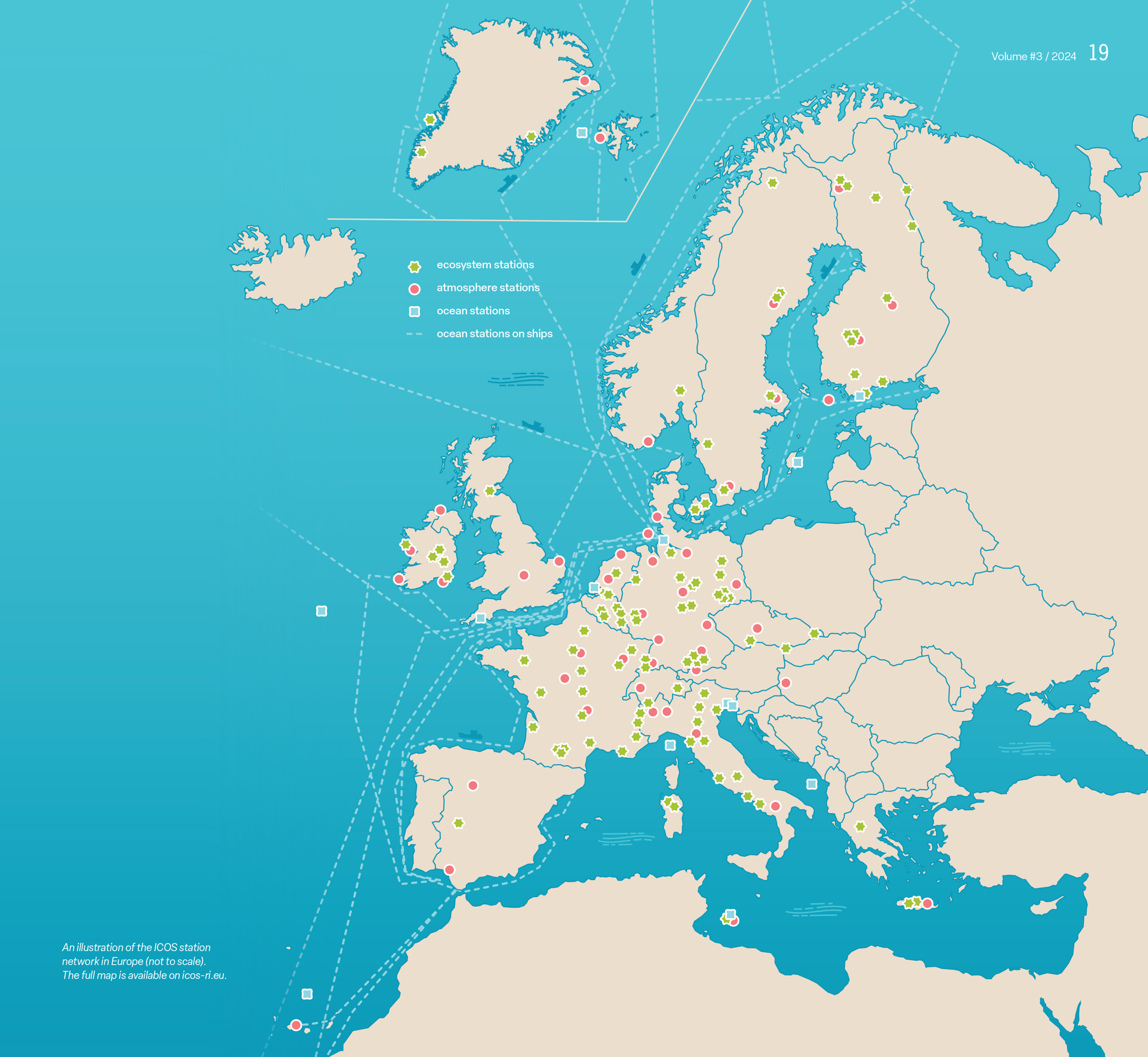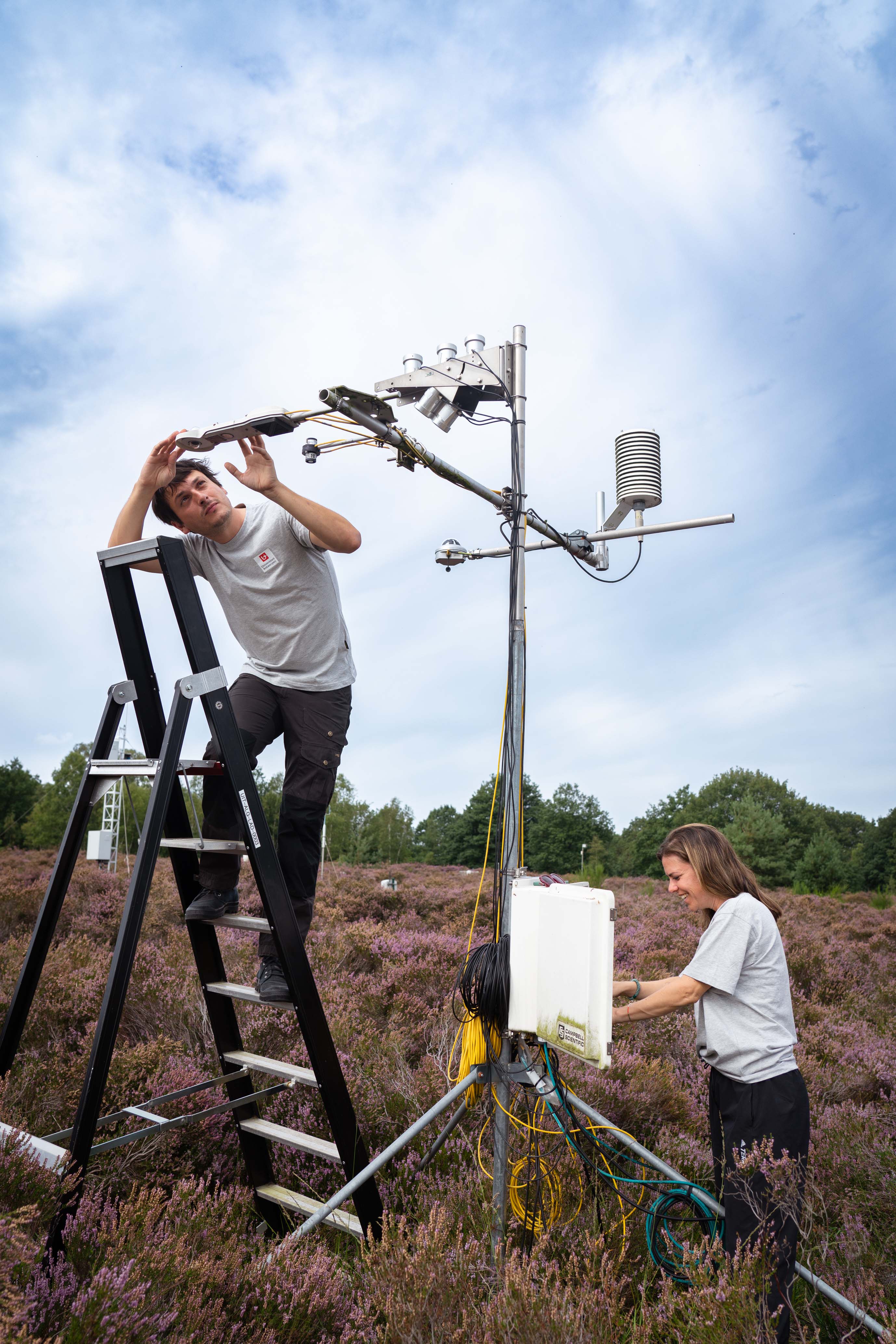
The fight against climate change calls for accurate data on greenhouse gas emissions. The ICOS network of observation stations, spread across diverse environments in Europe, addresses the challenge by providing near-real-time greenhouse gas data for research and climate models. This helps shed light on how human actions drive climate change.
National greenhouse gas inventories are the main way for countries to estimate their emissions. The inventories, compiled using guidelines from the Intergovernmental Panel on Climate Change (IPCC), are an annual calculation of the greenhouse gas emissions and removals, generated in certain sectors in a country’s territory.
However, such inventories typically include uncertainties due to the complexities of estimating and quantifying emissions from multiple sources across different sectors. They also focus more on human impact and less on natural fluxes, such as gas exchanges between ecosystems and the atmosphere.
This is where the Integrated Carbon Observation System (ICOS) comes in, providing independent data from atmospheric observations to support the inventories.
“Natural fluxes are a complex beast. If we want to understand what is going on in the atmosphere, we need information on human emissions and on natural fluxes,” says Dr Werner Kutsch, Director General of ICOS.
“Even though there is some uncertainty in the fossil fuel emission inventories, the bigger uncertainty is in the natural fluxes. The uncertainties can be addressed through modelling using ICOS ecosystem flux data,” he adds.
High-quality observational data can reduce uncertainties in inventories
ICOS provides near-real time greenhouse gas data from the atmosphere, ecosystems and oceans from nearly 180 measurement stations in 16 countries in Europe and beyond.
The idea is to create more accessible data by following what is known as the FAIR principle – that data should be Findable, Accessible, Interoperable and Reusable for machines and people.
“ICOS observational data finds its way into the inventories and MRV systems in many ways, through science, emission factors, inverse modelling and through projects developing concrete services,” explains Kutsch.
The ICOS ecosystem stations are located in a wide range of environments, from forests to wetlands, and crop sites to grasslands.
These contribute to various MRV systems with reliable and standardised greenhouse gas data.
Alongside this, the research infrastructure also measures emissions in urban areas through its EU-funded ICOS Cities project. Cities are hotspots for emissions, making it crucial to measure them.
“ICOS offers high-quality, standardised and open greenhouse gas measurements from different regions in Europe. In the MRV4SOC project, we are able to use ICOS data to increase the accuracy of our estimations and provide more reliable results," says Dr Marta Gómez-Giménez, a Remote Sensing Specialist and Coordinator of the MRV4SOC project, which monitors carbon farming in 14 demo sites across Europe.
"Natural fluxes are a complex beast. We need information on human emissions and natural fluxes."
Dr Werner L. Kutsch

"With standardised data and approaches, we will be able to build a robust MRV system for the EU land sector. Moreover, with open data, we will reduce the implementation cost. All in all, the ICOS network has great potential to complement other key data sources to monitor, report and verify carbon removals,” Gómez-Giménez continues.
The demo sites include five ICOS stations: Hurdal in Norway, and Brasschaat, Dorinne, Lonzée and Westmalle in Belgium.
“The contribution of the ICOS scientists from the demo sites has been very useful. They will help the MRV4SOC-project make the most of the available datasets,” she adds.
Increasing understanding of carbon farming
On top of supporting greenhouse gas emission inventories and contributing to MRV systems, ICOS data can also be used to understand the effectiveness of carbon farming. This approach, where land use practices aimed at increasing carbon stored in vegetation and soil are rewarded, is seen as a crucial way for the agricultural sector to contribute to climate change mitigation.
However, it is also important to keep track of its successes. For example, the ICOS Westmalle station in Belgium is running a long-term experiment to measure the impacts of carbon farming. The field is split into two areas: one with carbon farming practices and the other managed in a business-as-usual manner. The difference is then measured by comparing the parallel eddy covariance setups of each field.
“On the business-as-usual side, there is a rotation of maize, followed by a winter crop. But on the experimental side, we try to improve the crop rotations by including more permanent crops that can grow all year round, or by growing crops with deeper roots, so carbon can be stored deeper in the soil,” explains Tim De Meulder, Principal Investigator at the Westmalle station.
“Then, there are crops such as clover, beans and peas which can be ploughed under the soil when the main crop is harvested to increase the amount of carbon in the soil,” he continues.
"Research can help create more knowledge so that people can adapt carbon farming practices to their context, whether it is the size of the farm, the climate or other conditions in their country."
Dr Marilyn Roland
Dr Marilyn Roland, who manages several ICOS stations, including Westmalle, believes the station’s research has the potential to inform carbon farming practices in Belgium and beyond.
Measurements made using the eddy covariance method are particularly interesting for developing an MRV for carbon farming.
The technique, central to all ICOS ecosystem stations, measures the exchange of CO2 between terrestrial ecosystems and the atmosphere. This is key to get a high level of accuracy.
“Eddy covariance measurements can play a big role in MRV because they are such a good way to accurately measure carbon sequestration. This is something that is really in demand in Europe right now,” Roland says.
Measuring the success of carbon farming is key as landowners are increasingly interested in it.
“The landowners are quite eager to collaborate with us and become more sustainable because agriculture has gotten such a bad name in terms of its climate impacts in the recent years. There is a big movement among the farmers that is striving to change that,” she explains.
“Research can help create more knowledge so that people can adapt carbon farming practices to their context, whether it is the size of the farm, the climate or other conditions in their country,” she adds.
